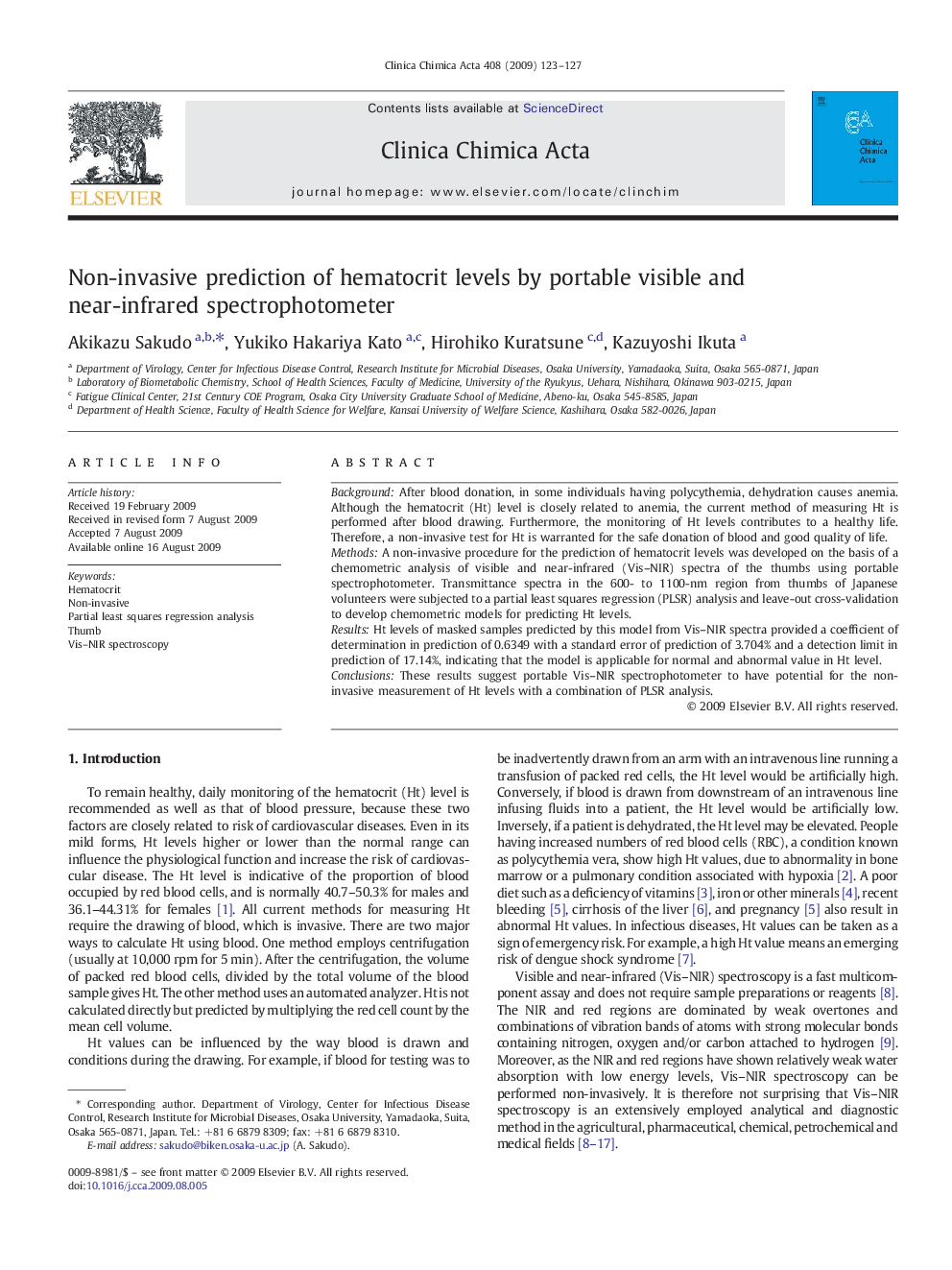| Article ID | Journal | Published Year | Pages | File Type |
|---|---|---|---|---|
| 1966506 | Clinica Chimica Acta | 2009 | 5 Pages |
BackgroundAfter blood donation, in some individuals having polycythemia, dehydration causes anemia. Although the hematocrit (Ht) level is closely related to anemia, the current method of measuring Ht is performed after blood drawing. Furthermore, the monitoring of Ht levels contributes to a healthy life. Therefore, a non-invasive test for Ht is warranted for the safe donation of blood and good quality of life.MethodsA non-invasive procedure for the prediction of hematocrit levels was developed on the basis of a chemometric analysis of visible and near-infrared (Vis–NIR) spectra of the thumbs using portable spectrophotometer. Transmittance spectra in the 600- to 1100-nm region from thumbs of Japanese volunteers were subjected to a partial least squares regression (PLSR) analysis and leave-out cross-validation to develop chemometric models for predicting Ht levels.ResultsHt levels of masked samples predicted by this model from Vis–NIR spectra provided a coefficient of determination in prediction of 0.6349 with a standard error of prediction of 3.704% and a detection limit in prediction of 17.14%, indicating that the model is applicable for normal and abnormal value in Ht level.ConclusionsThese results suggest portable Vis–NIR spectrophotometer to have potential for the non-invasive measurement of Ht levels with a combination of PLSR analysis.
